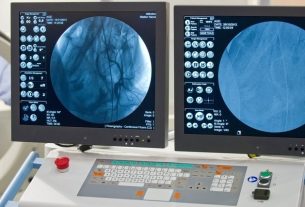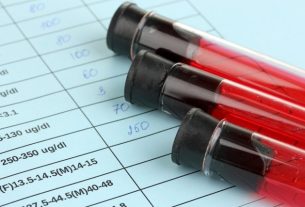The esophagram is an imaging exam that aims to evaluate the esophagus and pharynx, which is done through the use of a contrast, which allows the structure of the organ, its size and functioning to be visualized, which helps to identify changes in the esophagus, such as esophageal varices, esophageal reflux and anatomical changes, for example.
The esophagram exam must be carried out when completely fasting, that is, during fasting hours, eating and drinking are not allowed, even water. Fasting time may vary according to age, and it is recommended that from 4 years of age fasting is 6 hours.
This exam is not recommended for women who are pregnant or suspected of being pregnant, nor for people who are allergic to contrast.

What is it for
The esophagram is used to evaluate the esophagus and pharynx, being useful for checking the size of the organ, its structure and the presence of digestive changes, such as:
- Esophageal varices;
- Anatomical changes;
- Esophageal reflux;
- Changes related to the swallowing process;
- Presence of a foreign body in the pharynx and/or esophagus.
Thus, after carrying out the examination, the doctor is able to make the diagnosis and, thus, indicate the most appropriate treatment, if necessary.
How is the preparation
Preparation for the esophagram involves fasting, the time of which may vary according to the person’s age. Fasting is absolute, that is, water consumption during this period is not recommended.
In the case of children up to 1 year old, it is recommended that they fast for 3 hours, while for children aged 1 to 4 years old, the absolute fast is 4 hours. From the age of 4, the absolute fast must be 6 hours.
It is important that on the day of the esophagram, the person takes all tests related to the digestive and gastrointestinal system, if any.
How is an esophagram performed?
To perform an esophagram, it is recommended that the person drink a liquid that contains radioopaque contrast, barium, which allows visualization of the esophagus through exposure to X-rays. Therefore, after ingesting the contrast, several X-ray images are taken so that it is possible to observe the functioning of the organ and its structure.
After completing the exam, the person can return to their normal routine, and it is recommended to drink plenty of water to promote the elimination of contrast from the body.
When it is not indicated
Since it is an exam in which contrast is used, this exam is not recommended for pregnant women or women suspected of being pregnant. In the case of lactating women, before taking the test, it is recommended to collect milk using a pump, which must be stored in a thermal container and taken to the laboratory so that the baby can be breastfed during the test period.
The exam is also not recommended for people who are allergic to contrast.

Sign up for our newsletter and stay up to date with exclusive news
that can transform your routine!
Warning: Undefined array key "title" in /home/storelat/public_html/wp-content/plugins/link-whisper-premium/templates/frontend/related-posts.php on line 12
Warning: Undefined array key "title_tag" in /home/storelat/public_html/wp-content/plugins/link-whisper-premium/templates/frontend/related-posts.php on line 13



